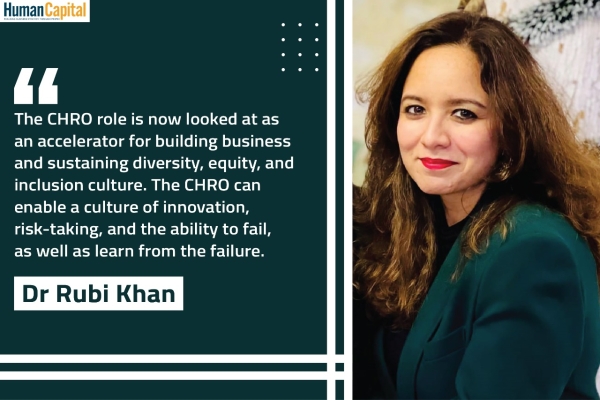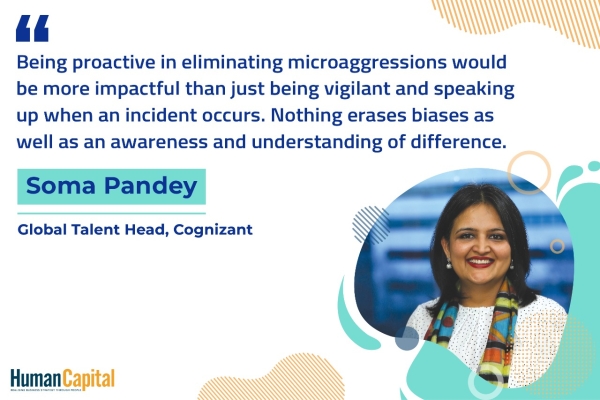There exists great evidence which stands as proof that the workplace of the future shall be increasingly different from what it was a few years ago, and for that matter, significantly different from what it is now. At the very core of this lies the nature of workforce that shall occupy the workplaces. An ever-increasing life expectancy with an improved quality of life, health, and fitness would mean that the office of the future would be multi-generational.

Therefore, the big question on everyone’s mind is managing this multigenerational talent at the workplace. With around 35% of the workforce anticipated to comprise of millennials, it is worthwhile to take a sneak peek at some of their characteristics.
Always connected and an instant response
It is well-known that millennials are digital natives. This implies that they possess the technology available to remain connected 24/7 and be always on. More often than not, this is indicative of the fact that they shall come forth with an instant response. When translated into the business context, this means that in order to engage them at the workplace, things must happen closer to the moment. For instance, it makes sense to do away with the traditional employee engagement survey held annually in organizations, and instead, keep in place a simple technology where the millennial worker can share feedback on the go and help the organization to make improvements alongside.
Along the same lines, millennials look forward to continuous feedback at every stage of the employee journey. When someone joins the organization – the 30-60–90-day onboarding feedback can be replaced by 1st, 7th, 15th, and 30th-day feedback. The purpose is to reduce the response time and make it closer to the event.
Impact-oriented
Millennials are keen to contribute to creating an impact. More often than not they stand inspired by the larger picture. What then could be the possible engagement mantra? It is pertinent to share the big picture by way of storytelling as to how the organization can offer it to them, and highlight how the contribution made by an employee impacts the outcome. At times, this may mean defining the problem statement to them and asking them to come up with ideas to improve the outcome, rather than offering them with an execution handbook to follow a set of operational procedures. In other words, one should ask for plans on how to create a better impact with the customers from the millennial worker and seek inputs.
Challenging the status quo
Millennials may not necessarily do things in a certain way on the basis of the fact that it was being done in that very fashion. They have access to better technology and often to better ideas, and are hence always likely to ask “why?”. Organizations that can harness this ability to challenge the status quo would be able to bring about rapid changes in line with changing customer needs. This would also mean that managers will need to be more open to ensure that the very status quo is challenged more often. One among the reasons for several organizations to increasingly opt out of the earlier approach to performance evaluation is owing to the fact that in a real business environment where goals are often shifting on a real-time basis, no one stands to benefit from an annual goal and evaluation. An interesting aspect is that the generation-next workforce is often triggering this thought within organizations.
“Several organizations are opting out of the earlier approach to performance evaluation because in a real business environment, goals are shifted on a real-time basis, and no one stands to benefit from an annual goal and evaluation.”
Technology savvy
There is hardly any doubt over the fact that the millennial generation is more technologically savvy than the previous ones. The reasons for this are not hard to find. Technology has been evolving at a rapid pace and is faster than ever before. Often, these technologies have brought about a significant revolution in the way businesses are run. Work that used to take months to complete can now be done within weeks, if not days. Turnaround times are shrinking at an alarming rate. And millennials are often leading this technology-driven change. Therefore, the best way to drive engagement with this generation of talent by harnessing the power of technology is by seeking insights and advice from them on how technology can enable a better experience to the customer.
Individualistic and yet collaborative
The new generation workforce is far more individualistic than some of the previous generations. This means that they often have strong individualistic views even though they are comfortable to work and collaborate with others. What then is the impact on managing their talent? To start with, the “one size fits all” approach is likely to disengage this generation faster. A standard career program is less likely to be exciting to all of them. In fact, interpretation of career growth carries a different meaning to different people in the present generation a lot more than some of its preceding ones. This means an individual level connect and understanding of personal ambitions and aspirations is the key to create a fulfilling talent management program. It does not mean absolute disregard for any form of structure, but rather a flexibility within a certain framework. For e.g., having a fast-track career program is still relevant and meaningful, but the components that go into that fast track could be different for different groups of people. One approach could pertain to job rotation to offer a variety of experience since for certain people career growth is about experiencing multiple roles and opportunities. At the other end of the spectrum, the same fast track career program needs to have the opportunity to build deep domain expertise for those who are seeking a vertical deepening of their existing skills.
Lifelong learners
Millennials are often lifelong learners. This trait is more driven out of the rapidly changing business world and also out of self-interest to build on new skills. Offering great learning opportunities within the work environment through real on-the-job learning can be a great engagement tool. Again, the key here is to keep the learning interesting, reflective, and introspective. Enablers like tools and technologies (e.g., gamification, virtual exercises, etc) help in speaking the language of the millennial workers while driving the learning agenda.
“The lifelong learning trait among millennials is driven out of the rapidly changing business world and self-interest to build on new skills. Offering great learning opportunities through real on-the-job learning can be a great engagement tool.”
It is true that the new generation of workers is different than the previous generation, but that holds true for the earlier generations as well. Simply put, each generation of workers have their own broad patterns of engagement and a clear understanding of that is the key to a great talent management model.
Does your organisation support you in maintaining work-life boundaries?
Trending
-
SBI General Insurance Launches Digital Health Campaign
-
CredR Rolls Out 'Life Happens' Leave For Its Employees
-
Meesho Announces 30-Week Gender-Neutral Parental Leave Policy
-
Microsoft Unveils Tech Resilience Curriculum To Foster An Inclusive Future
-
60% Indian Professionals Looking For Job Change Due To COVID: Survey
-
SpringPeople And Siemens Collaborate For Digital Transformation Push
-
86% Professionals Believe Hybrid Work Is Essential For Work Life Balance: Report
-
Almost 1 In Every 3 People's Personal Life Affected Due To Work Stress
-
Meesho Rolls Out Reset And Recharge Policy For Employees
-
80% Of Talent Leaders & Academics Say Pandemic Changed Skill Needs For Youth: Report
-
Hero Electric Rolls Out 'Hero Care' Program For Employees
-
Human Capital In Collaboration With ASSOCHAM Hosts Virtual Conference
-
IKEA India, Tata STRIVE Collaborate To Create Employability And Entrepreneurship Opportunities
-
SAP India, Microsoft Launch Tech Skilling Program for Young Women
-
DXC Technology, NASSCOM Collaborate For Employability Skills Program
-
Lenskart To Hire Over 2000 Employees Across India By 2022
-
Mindtree Launches Learn-and-Earn Program
-
Tata AIA Extends 'Raksha Ka Teeka' To Its Employees
-
Swadesh Behera Is The New CPO Of Titan
-
NetConnect Global Plans To Recruit 5000 Tech Professionals In India
-
Hubhopper Plans To Hire 60% Of Indian Podcasters By 2022
-
Corporate India Needs More Women In Leadership Roles: Report
-
Aon to Invest $30 Million and Create 10,000 Apprenticeships by 2030
-
Tech Mahindra Launches ‘Gift a Career’ Initiative for Upskilling of Youth
-
40% Women Prefer Flexible Working Options in Post-COVID World: Survey
-
3 out of 4 companies believe they can effectively hire employees virtually: Report
-
Vodafone , CGI and NASSCOM Foundation launch digital skills platform
-
Odisha: Bank, postal employees to deliver cash for elderly, differently-abled persons
-
Skill India launches AI-based digital platform for "Skilled Workforce"
-
Hiring activity declines 6.73% in first quarter: Survey
-
70% startups impacted by COVID-19 pandemic
-
Bajaj Allianz Life ropes in Santanu Banerjee as CHRO
-
Over 70 Percent MSMEs look at cutting jobs to sustain businesses
-
93 Per Cent employees stressed about returning to office post-lockdown
-
Johnson & Johnson India announces family benefits for same gender partners
-
Indian firms turning friendly towards working mothers
-
Welspun India names Rajendra Mehta as new CHRO
-
Wipro partners with NASSCOM to launch Future Skills platform



Human Capital is niche media organisation for HR and Corporate. Our aim is to create an outstanding user experience for all our clients, readers, employers and employees through inspiring, industry-leading content pieces in the form of case studies, analysis, expert reports, authored articles and blogs. We cover topics such as talent acquisition, learning and development, diversity and inclusion, leadership, compensation, recruitment and many more.
Subscribe Now












































Comment